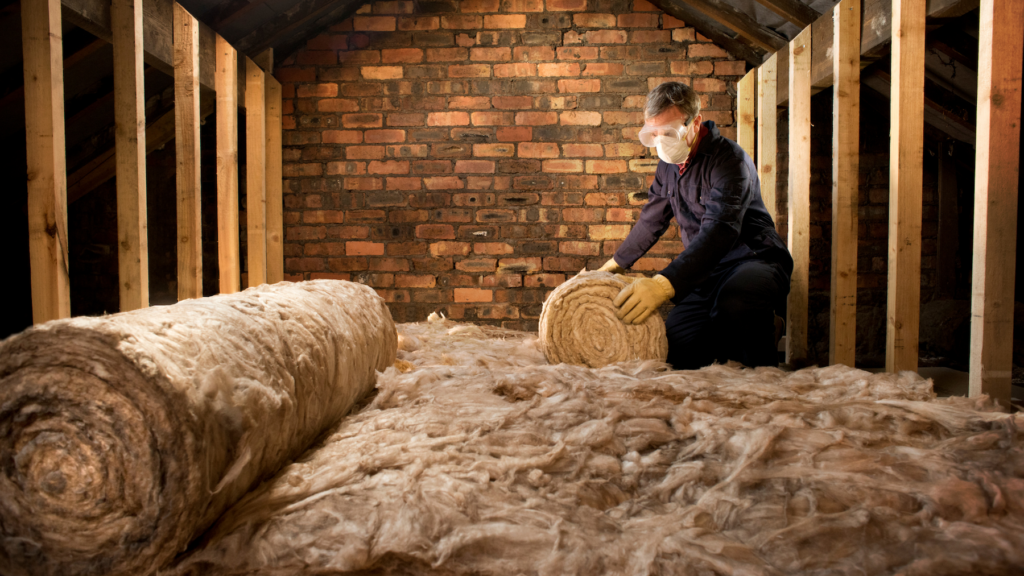The ECO Scheme has been set up by Ofgem, is overseen by the Government and involves multiple energy companies with the aim to help to cut carbon emissions and reduce fuel poverty within the UK. The scheme obligates energy companies with more than 150,000 customers to offer energy efficient solutions to those who need it most for free. The number of measures the companies are obligated to install all depends on their market share, meaning some smaller companies may have limited availability. However, British Gas, Eon, Octopus, Bulb and EDF are all a part of this scheme and will have more readily available accessibility.
However, the ECO scheme doesn’t permit energy suppliers to install these measures. Instead, there are smaller companies that work with these bigger energy suppliers to offer this grant and provide the surveying, installing and continued maintenance of the insulation and heating measures offered.
Eco Home Insulation works as a trusted fitter for these bigger energy companies. Our role involves checking your eligibility for funding, sending our trusted surveyors out to your home to see what measures are required, accessing the funding from the Government for these measures on your behalf, installing the necessary products and helping with any maintenance needed after.
Loft Insulation
Did you know – 25% of heat is lost through the roof!
Insulating your loft space can be an effective way to dramatically reduce the amount of heat lost and by association your heating bill. Energy Saving Trust state that if ‘installed correctly, loft insulation should pay for itself many times over in its 40-year lifetime’ and over a quarter of heat is lost through a poorly insulated roof.
The main benefits of installing loft insulation are that it not only helps to reduce your energy bills but also keeps your home warm in the winter and cool in the summer!
How does it work?
If access to your loft is clear and the joists within your loft are regular, then rolls of mineral wool insulation are typically used. Usually, the first layer of insulation is laid between the joists [the beams that makes up the floor of your loft space] before another layer is laid to cover the joists and build the insulation up to the correct depth (typically 270mm but 300mm for Eco Home Insulation consumers).
There are several things to consider before your loft is fitted with insulation including:
- Room in Roof – If you are hoping to have your loft as a living space, then you will need to make sure that all the walls are insulated as if they were another room within your home – as well as insulating the ceiling of your loft to prevent overall heat loss. This process is known as room in roof insulation (R.I.R.I).
- Damp – Loft insulation prevents heat escaping from your home meaning your loft space becomes much cooler than usual. This could in turn introduce damp & condensation problems or worsen a pre-existing damp problem. Before any insulation is fitted it is essential any damp problems are rectified first.
- Ventilation & Accessibility – In order for the loft space to stay clean, dry, and healthy it requires good ventilation. A good quality professional fitter will not cover up any internal intentional vents. If your loft space is hard to access, then other specialised measures may be taken to insulate your property in awkward spaces.
- Storage – if you are wanting to use or currently use your loft for lots of storage space then you will need to lay down boards over the joists. This unfortunately means that the insulation under the boards will not reach the desired depth (270mm-300mm). However, there is always an option to build the floor of your loft up to still have the floor space for storage as well as the required insulation depths ensuring the reduction in heat loss. Another alternative solution is to fit the insulation between the rafters on the roof of your loft and attaching insulation boards to fix it into place – this is a specialist measure and will require a professional to install.
How do I know if my loft is insulated?
Well, the best way to identify this is to check! If you’re able and have clear access, check your properties insulation. Once you have determined whether the loft space is insulated or not you can contact a local insulation fitter or ourselves, to check that it is up to regulation standards.
Most modern homes will have insulation already installed in their loft space, with the minimum depth being 270mm. However, some older more traditional properties may have little to no loft insulation and may be causing problems within the property such as mould or damp as well as increasing energy bills.
If you are unsure of whether your loft has been properly insulated, you can check this via the EPC register via https://www.gov.uk/find-energy-certificate providing there is an EPC certificate for your property.
The dos and don’ts of loft insulation
When having insulation installed or if you are installing the insulation yourself, there are a couple of things to think about before you begin:
- If your loft space houses a water tank or boiler system, then it is essential that you don’t cover the vents when insulating around the tank.
- If using a professional installer, check their guarantees for installation.
- Do not overfill your loft with insulation, the standard recommended amount is between 270mm and 300mm.
- Use insulation material that is recommended by one of the loft insulation regulators and check that it fits your lofts specific requirements. The main types of loft insulation are mineral wool (fibre glass or rock wool), foam insulation, and sheep’s wool insulation.
- Make sure the installer you use is registered with one of the main loft insulation bodies (KIWA, CIGA or NIA)
- If your loft is hard to access or you are not able to, do not attempt to fit the loft insulation yourself. This can be dangerous. Make sure you contact a professional installer to come and complete the work.
- If installing the insulation yourself, make sure you use protective equipment when necessary.
6 things you need to know before applying for loft insulation:
With the recent cost of living crisis meaning energy bills and other household outgoings are on the rise, people across the UK are looking for ways in which to save money. The Eco Scheme is a great way to do this but can be slightly confusing. So, we’ve put a short list together of things you need to know before applying:
- What is the grant? The loft insulation grant is a part of the Eco Scheme. The ECO Scheme has been set up by Ofgem, is overseen by the Government and involves multiple energy companies with the aim to help to cut carbon emissions and reduce fuel poverty within the UK. The grants are available to eligible customers and include CWI, IWI, RIRI, Loft Insulation, Solar, Electric Storage Heaters, Boilers, and Air Source Heat pumps.
- Who can apply? The scheme has been set up to help people in low-income, fuel poor or vulnerable households across the UK. There has been recent changes to the qualifying benefits due to the introduction of ECO4 but the full list of eligibility criteria can be found https://www.ecohomeinsulation.co.uk/ However, there are ways to receive the grant if you do not receive these benefits via the FLEX scheme (offered through some councils).
- How to apply? To check if you qualify for these grants, just fill out our 2-minute eligibility checker on our website and a member of the team will be in touch with you regarding your application.
- What happens when you’re awarded the grant? Once you have completed our eligibility checker, a member of the team will be in touch with you regarding whether the property is eligible for a grant. We will then arrange a time with yourselves to send a surveyor round to your home to assess what measures are needed. If you then decide to proceed the installer will gather the appropriate documentation, meaning you may need to provide evidence such as land registry, benefits or proof of address. After that some comprehensive checks are done to ensure the installation is completed correctly, safely and to a high standard.
- Benefits of receiving the grant – There are many benefits of receiving the loft insulation grant, including saving money on your energy bills, adding value to your home, and reducing your carbon footprint. The grant means payment isn’t required from yourself, meaning it is a sound investment for the future of your home.
- When will you know when your application is successful? If your application is successful, you will be notified by a member of our team within a few weeks of application. However, if you are unsuccessful a member of the team will also call you to explain why and what steps you could potentially take next.
How can we help?
We would love to help you save money on your energy bills and improve your quality of living within your home, as well as our team having a passion for the environment and lowering the UK’s carbon footprint.
There are many factors to consider before fitting any insulation to your home, which is why at Eco Home Insulation we send our trusted surveyors out to your home before any measures are installed. We will advise on the best measures for your home and talk you through the process before any installation begins.
Providing your loft has little damp or condensation and has easy access, it should be easy to insulate. PAS and UK building regulations state that all conventional loft spaces should have loft insulation to a depth of 270mm and The Energy Saving Trust claim that topping your loft insulation up to the minimum depth can save the occupiers up to £250 on their energy bills, annually.
However, at Eco Home Insulation we will top up the insulation in your loft space to a minimum of 300mm – completely free of charge giving you further savings on your energy bills!
Fitting loft insulation is a straightforward job and shouldn’t take too long, especially if your loft space is empty or a space has been cleared prior to installation. However, it can become more time consuming if loft boards need removing or pipes/wires need to be worked around. If you do have pipes in your loft, these will also need insulating.
If you have any questions on the types of insulation discussed in this blog or want to know whether you qualify for free insulation installation, please contact us today and one of our team would be happy to talk you through your options and eligibility for free funding.
See if you qualify for funding at https://www.ecohomeinsulation.co.uk/eligibility/
Or call 0333 444 1062

